Chaetomorpha / Chaeto for nutrients export
Chaetomorpha or often called Chaeto / Cheato or Spaghetti algae is is a very popular macroalgae widely used in the sump or a planted refugium to reduce the nitrate and phosphate level in the marine aquarium for a more clean water environment.
Normally this macro algae will be placed in the refugium / sump to export nutrients like Nitrate and Phosphate out of the marine aquarium water, providing a more clean water environment for Corals and fishes.
Chaetomorpha is a non-invasive macroalgae and can easily trimmed by removing excessive growth.
There are more than 20 different species of Chaetomorpha / Chaeto macro algae species growing in lots of different areas around the world. ITs form will vary from very thin strings, over pasta thick species to steel-wool thick chaeto. The various frequent types of Chaetomorpha or Chaeto (evident cato) are all categorised as Chaetomorpha linum.
Livealgae Uk offer you currently three different species of Chaeto:
The first Chaeto macroalgae species we offer features a thick, dark green tangled mass of filaments, which looks like long strings.
This Chaeto species isn't palatable. Algae eating marine fishes may try to eat it, but often they can't digest it. It is great as well for low nutrients tanks as it grows medium fast but therefore is more stable when your tank runs very low on Nutrients for a short time.
The second Chaetomorpha macroalgae species we offer has medium thick strings and grows at a much faster rate than the first thick Chaeto species. It is great for Nutrients removal but it does not stand well in times where Nutrients, especially Nitrate and Phosphate are very low.
The third Chaetomorpha species we offer is palatable and very, very thin. Especially algae-eating marine fishes like the Fox Face Fish and Tang species like the Yellow Tang and The Blue Tang will love to eat this. It is medium fast growing and needs even more than the medium thick Chaeto species, always enough nutrients available, or it will collapse and die off. It prefers as well regular Iodine and Iron dosing.
The amount of Chaeto necessary to start with will vary depending on the size of your marine aquarium and the space you can provide for it to grow.
As a general rule we recommend per 100 liters a normal portion of our Chaeto ( around 125ml ).
All the Chaeto macroalgae we sell are from our Fish Free& Copper free Tanks for a disease-free and premium quality.
This said, they might come with hitchhikers not limited to Copepods and Rotifers, as those beneficial critters love the protected environment of our planted marine tanks.
We recommend this algae when you like the idea of having macro algae growing to reduce Nutrients like Phosphate / Nitrate and at the same time to have -depending on the Chaetomorpha species you have chosen - a natural algae food source growing for your fishes.
Chaeto macroalgae, in general, are quite stable macro algae, which will not cause any problems like some Caulerpa species, which might go sexual, and as it is noninvasive you will not have the problem like with invasive macroalgae which might overgrow a reef tank.
By removing the excessive growth of the Chaeto out of the tank, the nutrients Chaeto used to grow out of the marine water, mainly Nitrate and Phosphate will be removed effectively.
As Chaeto does not attach itself to anything it is as well very easy to remove them from the aquarium again or to thin it out.
Chaetomorpha is also known to host beneficial copepods, amphipods and rotifers which can be used as a food source for corals and animals within the aquarium.
Chaeto prefers a more red-light colour spectrum to grow well, opposite to a lot of the marine macroalgae we offer, which prefer a light colour around 6500k and we recommend to let it tumble around in the refugium, so it gets good light and doesn't collect any detritus.
If you experience growth problems with you Chaeto
Chaeto is normally one of the easiest macroalgae species to keep in the marine aquarium, as it is fast growing, not very demanding and non invasive.
A perfect beginner and expert macroalgae for the nutrients export.
Should the Chaeto however not grow very well we recommend to have a look at he following checklist to see if some adjustments may be necessary for an improved Chaetomorpha growth:
- Use lighting designed for Chaetomorpha. Chaeto likes a more reddish light spectrum, with a factor of Red to Blue LEDs 6:1 to 8:1. It will grow with full spectrum light at 6500k as well, but it does not utilize the light provided as an optimum. The light output need ti be sufficient enough too of course.
- Maintain proper levels of Nitrate and Phosphate. These are the main elements Chaetomorpha needs to grow, and should there be a limited supply it will limit the growth of the Chaeto too. We recommend maintaining at least a Nitrate level of 1 ppm and a Phosphate level 0.02.
In heavier planted refugiums / reef tanks or when an algae reactor is used it might be necessary to add Nitrate / Phosphate supplements to maintain a proper nutrient level. - Maintain proper levels of Iron, Iodine, Potassium and Boron which are beneficial.
- Maintain a Magnesium level between 1350 -1450 ppm, but below below 1500 ppm, as a too high magnesium can interfere with the functions of calcium which is a key element for algae growth.
- Avoid using Nitrate or Phosphate remover as they will limit the main Nutrients Phosphate and Nitrate Chaeto needs to grow and will take out other trace elements which are important for a healthy algae growth.
- Avoid using Biopellets as they will limit the Nitrate available for the Chaeto.
- Provide a sufficient water flow and when possible let the Chaeto tumble.
- Run the lighting for the Chaeto max 16-20 hrs a day, recommended is to run it over the night to provide a stable pH environment.
- Acclimatise the Chaeto when added it new to the refugium or when using new stronger lighting by reducing the lighting time per day. Starting with 8 hours a day and increase slowly.
- Keep the macroalgae light clean, so it can provide the light as good as possible.
If you want to read more about what Chaetomorpha and other macroalgae will need to grow successful in your tank you can read more about HERE
Optimal marine aquarium water parameters for Chaetomorpha
Temperature: min 23 °C / max 29 °C, recommended 25-26 °C (A higher temperature will stress most macroalgae species and can damage them)
PH: 8.0 - 8.4, recommended 8,2
Alkalinity: 8-11 dkh, recommended 9 dkh
Salinity: 1.024 - 1.026, recommended 1.025
Nitrate: Between 3-10 ppm, not below 2 ppm
Phosphate: 0,03 ppm to 0.07 ppm, not below 0.02 ppm
Magnesium: Around 1300 ppm - 1450 ppm, recommended 1400 ppm. Not over 1500 as high magnesium can interfere with the functions of calcium which is a key element for algae growth.
Calcium: Around 380 ppm - 450 ppm ( high levels are important for calcified species like Halimeda)
Potassium: 380 – 420 ppm
Boron: 4 – 6 ppm
Iron: Around 0.01 ppm
Iodine: around 0.06 ppm
Dosing Nutrients /Minerals for an optimized Chaeto growth
Should you experience a sudden reduction in growth of your Chaeto or is it not growing well at all most likely you will have not enough of necessary minerals for it to grow, assuming you have proper lighting for your Chaeto in use. BTW Chaeto prefers a more reddish light to grow strong opposite to some other macroalgae species like Caulerpa.
In this case it can be beneficial to dose nutrients extra to your marine aquarium to improve the growth of the macroalgae.
We recommend for this especially two plant fertilizer for this:
1) Brightwell Chaetogro, which is formulated especially for the use in the marine aquarium and does not include any Phosphate, Nitrate or Copper.
2) Seachem Flourish Comprehensive which if widely used and just has a minor part of Nitrate, Phosphate plus a very small amount of Copper.
If you have a densely planted Reef Tank or planted Refugium it might be necessary to add extra Nitrate and Phosphate, depending on your water levels.
You can read more about Fertilizer for the planted Tank HERE
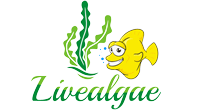
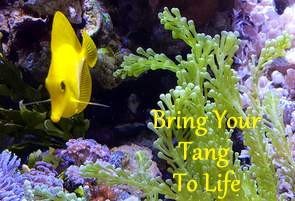
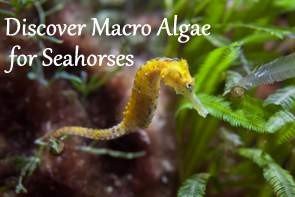
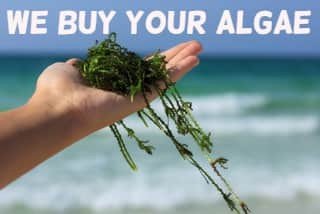
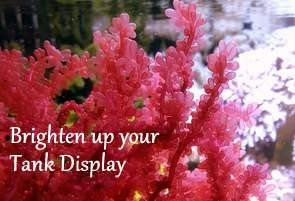

 Current Delivery Delays Due To Storm Darcy
Current Delivery Delays Due To Storm Darcy  Christmas break for our macroalgae species.
Christmas break for our macroalgae species.  Red macroalgae species for the Reef Display Tank
Red macroalgae species for the Reef Display Tank